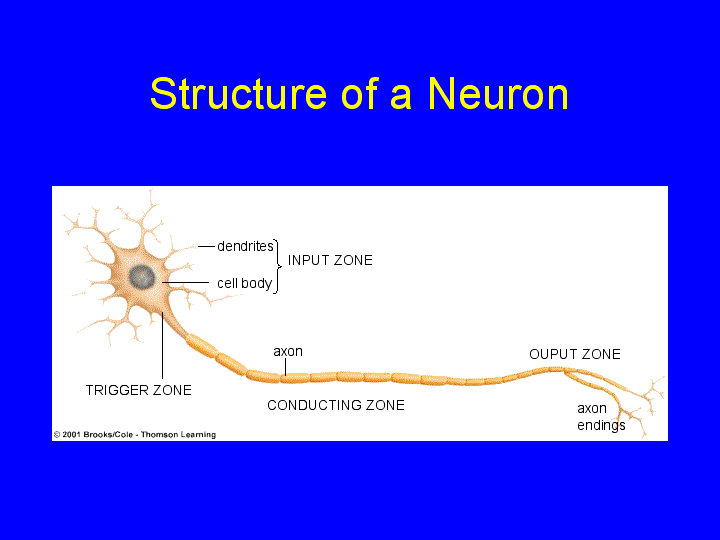

There is normally a charge difference across the plasma membrane of a neuron. The outside of the membrane has a positive charge. The inside has a negative charge. Resting potential results from differences between sodium and potassium positively charged ions and negatively charged ions in the cytoplasm. Sodium ions are more concentrated outside the membrane, while potassium ions are more concentrated inside the membrane. This imbalance is maintained by the active transport of ions across the membrane known as the sodium potassium pump. This difference or potential is measured in millivolts. The resting potential is usually about -70mv.
When a neuron receives signals, an abrupt, temporary reversal in the polarity is generated (an action potential). The inside becomes more positive. Any membrane that can produce action potentials is said to show membrane excitability. Voltage change causes voltage-gated channels in the membrane to open. As a result of ion flow through these channels, the inside of a neuron briefly becomes more positive than outside.
Two properties of the neuron membrane permit a resting potential:
There are more potassium ions inside and more sodium ions outside the resting neuron membrane. Potassium ions have a tendency to leak out by facilitated diffusion through channel proteins.
Most of the sodium channels are "gated" and remain closed most of the time, keeping the concentration outside high. However, small amounts of sodium do leak in and must be pumped out (and potassium pumped in) by the sodium-potassium pump.
This animation (Audio - Important) describes sodium - potassium pumps.
"Graded" means that the signals at the input zone vary in magnitude depending on the intensity and duration of the stimulus.
"Local" means the signal does not usually spread beyond the input zone. However, if the stimulation is strong enough, an adjacent trigger zone may respond.
When a stimulus reaches a certain minimum, a threshold-gated channels open and sodium rushes in. In an accelerating way, more and more gates open (this is an example of positive feedback).
At threshold, the opening of more gates no longer depends on the stimulus but is self-propagating.
These two animations (Audio - Important) describe an action potential:
action potential 1.
action potential 2.
Action potentials are all-or-nothing events. All action potentials are the same size. If stimulation is below threshold level, no action potential occurs. If it is above threshold level, the cell is always depolarized to the same level.
Repolarization
When depolarization in one region is ended, the sodium gates close and potassium gates open. The sodium-potassium membrane pumps also become operational to fully restore the resting potential. Movement of potassium out of the cell repolarizes the cell.
The action potential is self-propagating and moves away from the stimulation site to adjacent regions of the membrane undiminished. A brief (refractory) period follows at each depolarization site. Sodium gates shut and potassium gates open. During this period the membrane is insensitive to stimulation.
Take a look at the The Resting Membrane Potential Tutorial and the Action Potential Tutorial.